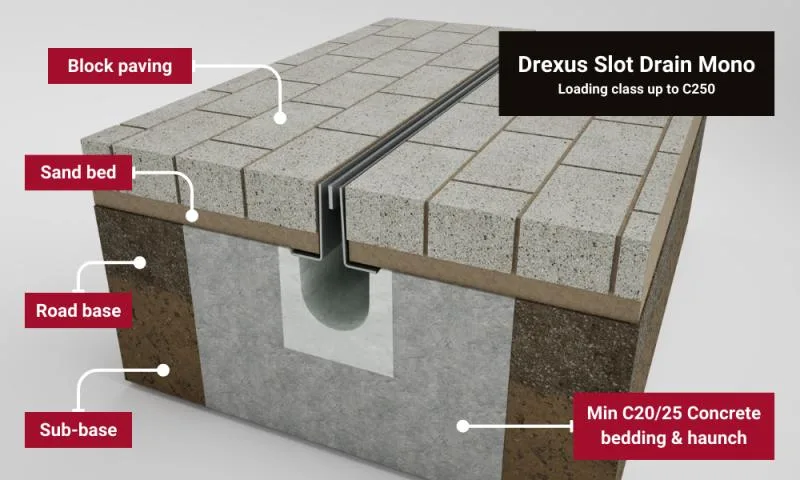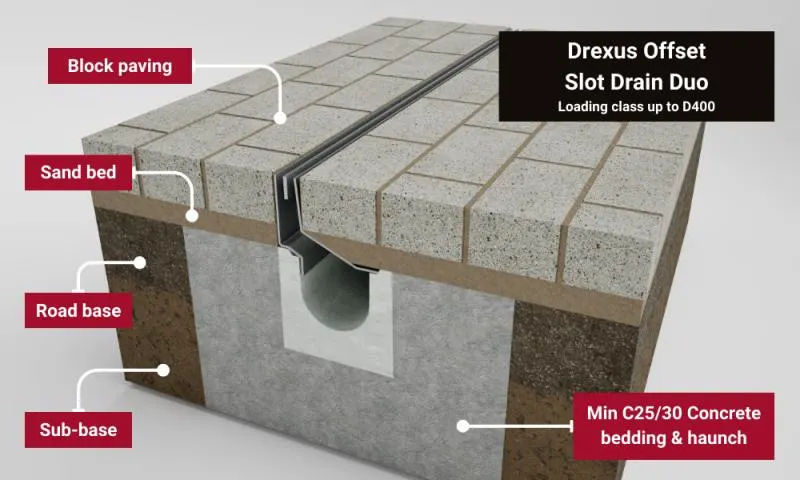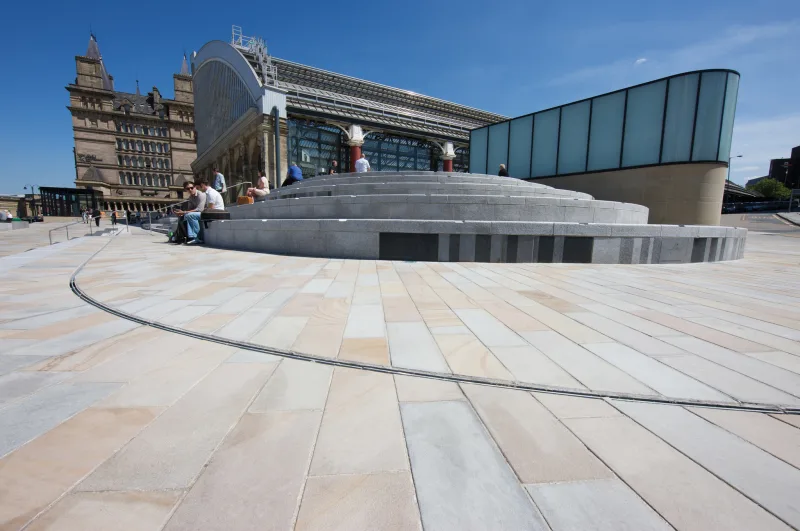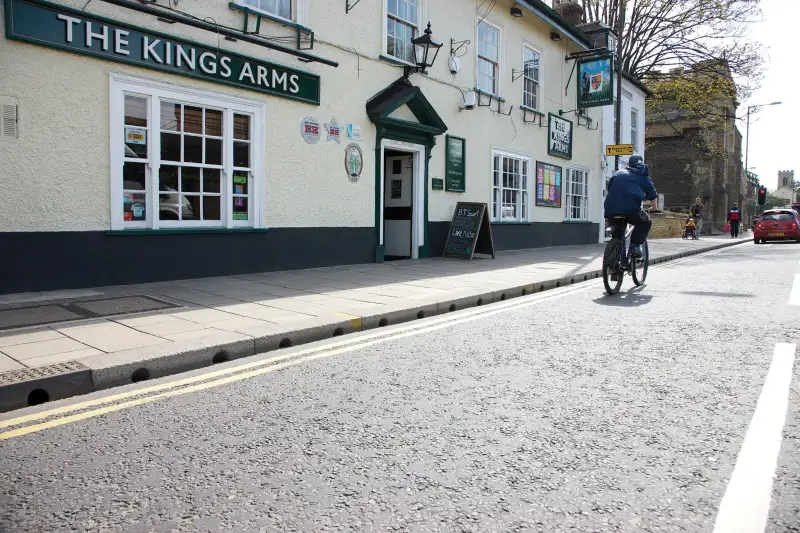Blog
As extreme weather systems hit the UK with unprecedented frequency and force, we’re all facing a new and sometimes frightening reality in which severe disruption from flooding becomes a monthly if not weekly occurrence.
This heavy rain, paired with rising sea levels and increased urbanisation, has elevated the importance of managing surface water to new heights, meaning we are all becoming more reliant on effective drainage systems than ever before.
As landscapers, local planning authorities, property developers, and sustainability consultants, we now have a professional and moral responsibility to provide solutions that reduce the likelihood of flooding and lessen its impacts.
Yet, practicalities aside, we also have aesthetic objectives to achieve. We want to specify drainage systems that have the lowest visual impact on a landscape’s overall design and usability. Really, our aim is to provide solutions that people don’t realise are there at all.
In this blog, I explore several of the most effective hidden drainage solutions that excel in terms of both form and function. These solutions deliver on aesthetics, appearing near-invisible to the casual observer, but still provide the necessary in-ground drainage to keep public spaces operational and safe.
Slot drainage
Hidden slot drains provide the benefits of a typical below-ground concrete drainage channel without having the surface impact of a grating system.
From the surface level, all that can be seen is a narrow slot, either mono (Figure 1) or duo (Figure 2), which can be placed strategically along the joint lines of paving flags, not impacting the overall design.
Figure 1: Mono slot drain example

Figure 2: Duo slot drain example

A slot drain system often does not provide the deepest channels but can be installed in areas where a shallow build-up is required and can be excellent in addition to a larger-scale drainage system.
Here is an example of a slot drain installed at Liverpool Lime street:

Kerb drainage
Combined Kerb Drainage systems (CKDs) are an extremely effective drainage solution, particularly along a roadside. They consist of kerb units with evenly spaced intake perforations along the front face that allow for water to flow from the road surface into an underground concrete channel.
These systems come in a wide variety of sizes and strengths, allowing them to be highly adaptable to the variety of circumstances and conditions that may be present across different sites. They can deal with a large quantity of run-off water in areas with both shallow or deep build-up and are engineered to maintain their structure over a variety of trafficking-related load stress and impact, up to an E600 loading class.
The combination of a kerb and a drain provides a multipurpose solution for designers and installers that keeps a pavement bound and a road clear of streams. As is shown in Figures 3 and 4 below, CKDs such as the Beany Block and Mini Beany integrate seamlessly into a wide variety of landscapes, providing exceptional drainage without compromising the aesthetic appeal of the environment itself.
Figure 3: Beany Block combined kerb drainage system in a commercial space

Figure 4: Mini Beany combined kerb drainage system in a rural setting

Priora Permeable Paving
Priora is Marshalls' Concrete Block Permeable Paving (CBPP) system. Priora may appear from the surface to just be a paving system, but it uses innovative interlocking nibs at the edge of the units to provide a void where the joints would typically be.
This construction allows water to drain through the system into a specially prepared sub-base. The design of these blocks provides 40% more interlock than standard paving, and as such, surface stability is maintained even whilst providing these voids.
When it comes to hidden draining, Priora maintains the aesthetic of a typical paving system while also providing an excellent solution for draining surface water. Plus, Marshalls has some great permeable paving options, including Priora Permeable Flag Paving, Conservation Priora Paving and Tegula Paving.
Rain Gardens
A rain garden is a shallow depression or hole that can intake and store rainwater and runoff, preventing it from entering the underground drainage pipes. They’re not only an aesthetically pleasing drainage solution but an effective method of holding additional quantities during periods of sudden heavy downpours.
Rain gardens are a highly sustainable method of storage. The soil and vegetation that can be used in these systems are fantastic for taking in both clean and dirty water. They are able to absorb air pollutants from the water before releasing them back into the system, reducing water pollution in general.
The plants that are used for rain gardens are of crucial importance; you must make sure that they are suitable for the soil and climate they are going to be housed in and capable of thriving when the rain garden partially floods.
A rainwater garden can have a similar effect on its local area as a typical garden pond, providing a habitat for a range of semi-aquatic creatures, such as newts and frogs, as well as a host of insects and birds that would wish to feed on them.
Though how much standing water is in place will depend on how the space is engineered, even if the space does not flood in such a manner, the vegetation and soil, whether dry or wet at the time, will encourage plenty of wildlife into the space.
Here is render of our new rain garden kerb, EDENKERB™, created by our CAD team:

With so many factors to consider and variables to take into account, getting expert consultation in the planning and specification of rain gardens is essential. At Marshalls, our teams have decades of practical experience and technical expertise, meaning we can support you in creating exceptional rain gardens that deliver in both form and function.
Marshalls’ Design Team can also help with any other drainage requirements you may have in existing and upcoming projects. If you need product guidance, specification advice or assistance, get in touch:











